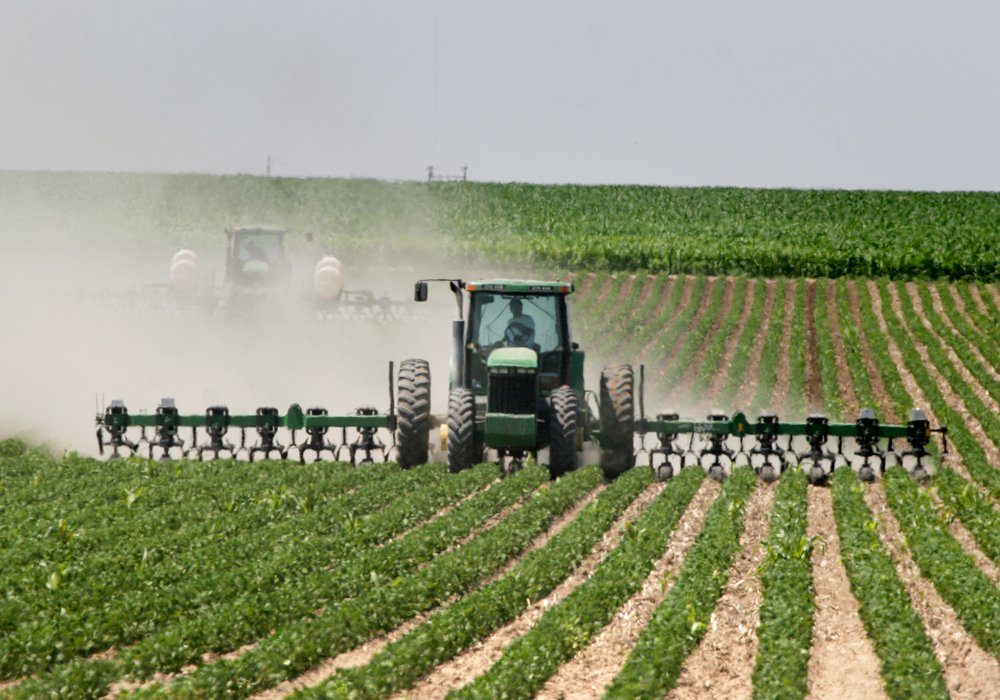U.S. soybean supplies likely to continue feeling the pressure

American soybean ending stocks, which were drawn down to bottom-of-the-barrel levels last year, are unlikely to be much higher at the end of the current production year despite a projected 6.6 percent increase in production.
That’s according to Refinitiv, a global provider of financial and market data based in New York and London.
In a May 26 webinar, Refinitiv’s United States agriculture research manager, Libin Zhou, said the global soybean market is dealing with extremely low inventories in Brazil and the U.S., the world’s top two soybean producing and exporting nations.
U.S. ending stocks for 2020-21 are expected at “a very low 3.3 million metric tonnes,” Zhou said.
Brazil, which typically exports a few million tonnes in the November-through-January period, shipped virtually no soybeans in the three-month period ending Jan. 31, 2021, she added.
“It’s an indicator that Brazil has used up almost all of its soybean inventories,” Zhou said.
“That means that in the top two soybean exporting countries — Brazil and the United States — at the end of the 2020-21 season, soybean ending stocks are going to be at very, very low levels.”
According to Zhou, tight global stocks combined with strong demand, particularly from China, have driven the price of soybeans to their highest level since 2012.
American producers were expected to increase their soybean plantings this year to around 88 million acres — above last year’s level and significantly higher than the five-year average.
But extremely low ending stocks, combined with continued strong demand, suggests that 2021-22 ending stocks in the U.S. will only increase marginally, if at all.
Refinitiv estimated total U.S. production at 4.4 billion bushels this year, up 6.6 percent over last year.
That’s based on an average yield estimate of 51.1 bu. per acre.
Refinitiv weather analyst Ed Whalen said planting conditions were generally favourable in key soybean producing areas.
“In general, the weather is kind of neutral for (U.S.) corn and soybean production…” added Zhou.
Although hot and dry summer conditions are expected for some soybean growing areas, widespread U.S. drought is unlikely to happen, based on Refinitiv’s summer weather outlook.
Zhou said soybean exports from the U.S., Brazil and Argentina in 2020-21 were projected at around 154 million tonnes.
That compares with a 159 million tonne export forecast in 2021-22, up five million tonnes on a year-over-year basis.
The U.S. Department of Agriculture is projecting Brazil’s soybean production to increase 12 million tonnes to 144 million tonnes in 2021-22.
Nonetheless, global ending stocks are expected to remain extremely tight.
“Even with record high production in Brazil next year, the soybean supply… will remain at similarly tight levels,” Zhou said.
“U.S. soybean supplies will decrease from a year ago, mainly because of low beginning stocks,” she added.
Meanwhile, for corn, Zhou said the outlook points to higher global supplies in 2021-22 based on increased production in the U.S., Brazil, Ukraine and Argentina.
Refinitiv said Brazilian corn production of 118 million tonnes, as projected by the USDA, would mean a year-over-year increase in Brazilian corn supplies of about 30 million tonnes.
U.S. corn supplies, based on projected plantings of 94.1 million acres and an average yield of 178.4 bu. per acre, could also increase by 15 million tonnes this year.
Even if production estimates in the world’s four largest corn producing nations — Brazil, Argentina, Ukraine and the U.S. — fall short of estimates, global corn supplies could be 20 to 30 million tonnes higher in 2021-22, than they were a year earlier.
Source: www.producer.com

